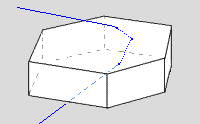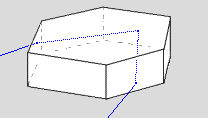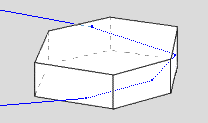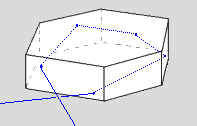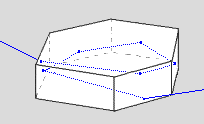
OPOD
What's New
Rays & Shadows
Water Droplets
Rainbows
Ice Halos
Contents
Crystals
Frequent Halos
22° circular
Sundogs
Tangent Arcs
Circumscribed
Pillars
Circumzenithal
Circumhorizon
Parhelic Circle
Formation
Low Sun
High Sun
More Images
Infrequent Halos
Multiple Displays
Other Worlds
Observing Halos
HaloSim
High Atmosphere
Links & Resources
Search - Index
123456789012345678
| Parhelic Circle Formation ~ A halo of many paths |
| The parhelic
circle is produced when sunlight or moonlight reflects from
near vertical faces of ice crystals. Plate, horizontal columns and Parry oriented crystals all make it. The reflection from the outside of a crystal or one more times within it. The parhelic circle appears simple yet more ray paths contribute to it than in any other halo. Some are very intricate. |
 |
External
and internal reflections make the parhelic circle. External
reflections contribute most near the sun. Rays reflected
once inside a crystal produce much of the halo intensity.
Opposite the sun, rays internally reflected twice or more
add their brightness. The relative contributions depend on
the sun's altitude and the crystal thickness. Unfiltered
(left) and filtered (right) fisheye HaloSim ray tracings
for a 30� high
sun. |
 |
|
There are even more ray paths in plate crystals and further ones involving the near vertical end faces of column crystals! Find them with HaloSim by using the ray filters and the ray tracer.

